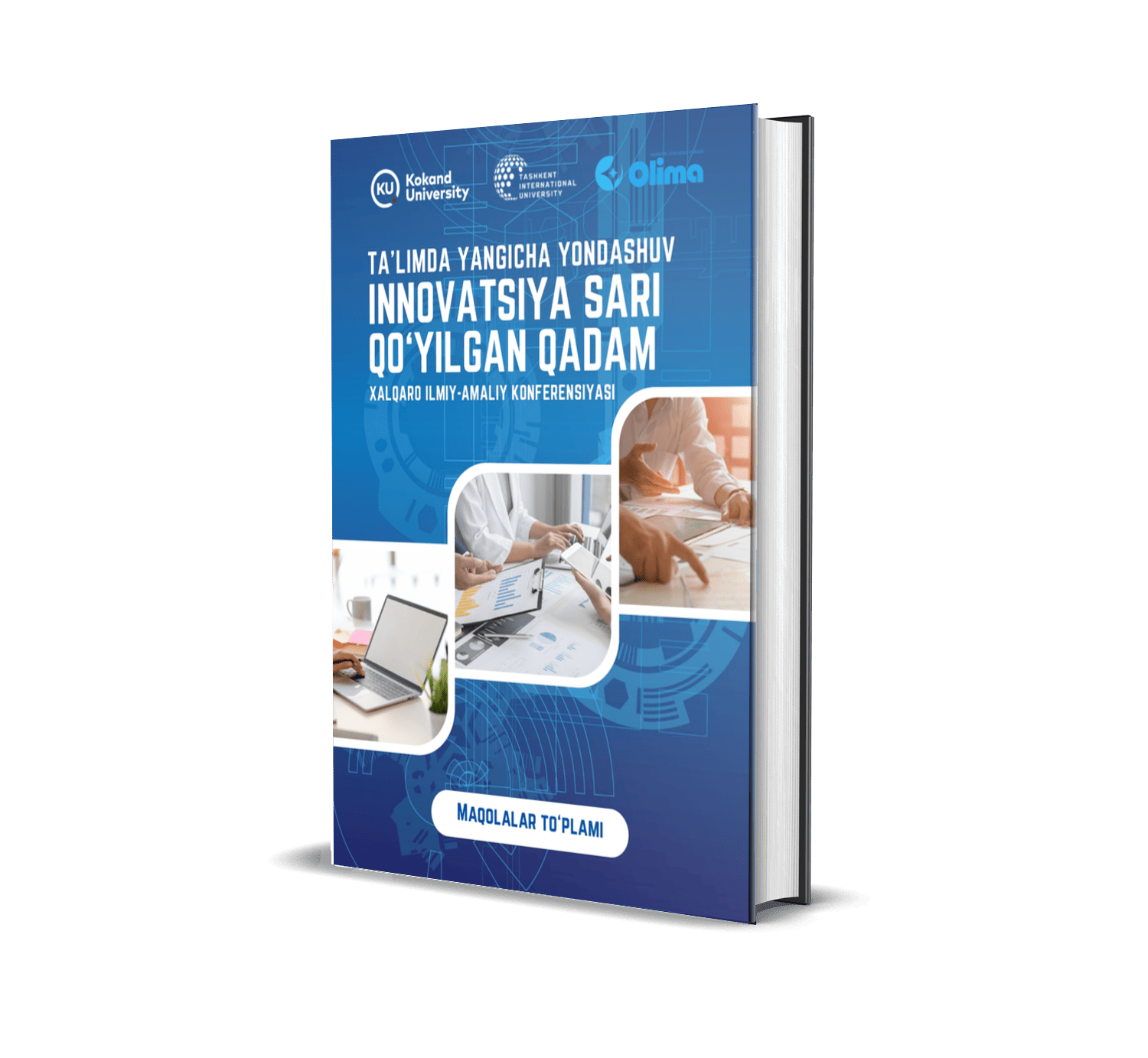LINGUSITIC ANALYSIS OF GENERATIVE ARTIFICIAL INTELLEGENCE GENERETED TEXTS
Dilyorjon Solidjonov
Graduate student of Kokand State Pedagogical Institute
Keywords: Generative AI, linguistic analysis, syntax, semantics, pragmatics, Uzbek language, English language, natural language processing, artificial intelligence, multilingual AI
Abstract
The linguistic analysis of AI-generated texts reveals critical insights into the syntactic, semantic, and pragmatic capacities of generative artificial intelligence. This study examines the capabilities and limitations of AI models, focusing on their ability to produce naturalistic text in English and Uzbek. While AI often achieves impressive surface-level accuracy, it struggles with deeper linguistic nuances, such as idiomatic expressions, cultural context, and flexible grammatical structures. The findings highlight the disparities in performance across languages, underscoring the need for more equitable representation of underrepresented languages in AI training datasets. Additionally, the study explores implications for linguistic theory, practical applications, and future research directions in enhancing AI's adaptability to diverse linguistic landscapes. Ultimately, this analysis contributes to a deeper understanding of the intersection between language and technology, offering pathways for more inclusive and context-aware AI development.
References
Brown, T., Mann, B., Ryder, N., Subbiah, M., Kaplan, J. D., Dhariwal, P., ... & Amodei, D. (2020). Language models are few-shot learners. Advances in Neural Information Processing Systems, 33, 1877–1901. https://doi.org/10.48550/arXiv.2005.14165
Devlin, J., Chang, M. W., Lee, K., & Toutanova, K. (2019). BERT: Pre-training of deep bidirectional transformers for language understanding. NAACL-HLT Proceedings, 4171–4186. https://doi.org/10.18653/v1/N19-1423
Goldberg, Y. (2017). Neural network methods for natural language processing. Synthesis Lectures on Human Language Technologies, 10(1), 1–309. https://doi.org/10.2200/S00762ED1V01Y201703HLT037
Al Kuwatly, H., Lahoud, C., & Hajj, H. (2020). Artificial intelligence for natural language processing: Applications and research challenges. Computational Linguistics, 46(4), 651–670. https://doi.org/10.1162/coli_a_00406
Jurafsky, D., & Martin, J. H. (2021). Speech and language processing: An introduction to natural language processing, computational linguistics, and speech recognition (3rd ed.). Pearson Education.
Schick, T., & Schütze, H. (2021). Exploiting cloze-questions for few-shot text classification and natural language inference. ACL Proceedings, 279–285. https://doi.org/10.18653/v1/2021.acl-long.23
Vaswani, A., Shazeer, N., Parmar, N., Uszkoreit, J., Jones, L., Gomez, A. N., ... & Polosukhin, I. (2017). Attention is all you need. Advances in Neural Information Processing Systems, 30, 5998–6008.
Xu, W., Sun, T., Xu, C., & Guo, L. (2020). Semantic coherence in AI-generated texts: A comparison between human and machine outputs. Journal of Artificial Intelligence Research, 69, 173–197. https://doi.org/10.1613/jair.1.11834
Bender, E. M., & Koller, A. (2020). Climbing towards NLU: On meaning, form, and understanding in the age of data. ACL Proceedings, 1, 5185–5198. https://doi.org/10.18653/v1/2020.acl-main.463
Qiu, X., Sun, T., Xu, Y., Shao, Y., Dai, N., & Huang, X. (2020). Pre-trained models for natural language processing: A survey. Science China Technological Sciences, 63(10), 1872–1897. https://doi.org/10.1007/s11431-020-1647-3
Rogers, A., Kovaleva, O., & Rumshisky, A. (2020). A primer in BERTology: What we know about how BERT works. Transactions of the Association for Computational Linguistics, 8, 842–866. https://doi.org/10.1162/tacl_a_00349
Ebrahimi, J., Rao, A., Lowd, D., & Dou, D. (2018). Hotflip: White-box adversarial examples for text classification. ACL Proceedings, 31–36. https://doi.org/10.18653/v1/P18-2006
Linzen, T., Dupoux, E., & Goldberg, Y. (2016). Assessing the ability of LSTMs to learn syntax-sensitive dependencies. Transactions of the Association for Computational Linguistics, 4, 521–535. https://doi.org/10.1162/tacl_a_00115
Hovy, D., & Spruit, S. L. (2016). The social impact of natural language processing. ACL Proceedings, 1, 591–598. https://doi.org/10.18653/v1/P16-2096
Khan, R. M. I., & Ali, A. (2010). Analyzing the factors affecting learners' English speaking skills in Pakistani classroom. European Journal of Social Sciences, 18(3), 482-484.
Rao, P. S. (2019). The importance of speaking skills in English classrooms. Alford Council of International English & Literature Journal, 2(2), 6-18.
Rababah, G. (2005). Communication problems facing Arab learners of English. Journal of Language and Learning, 3(1), 180-197.
Richards, J. C., & Rodgers, T. S. (2001). Approaches and methods in language teaching (2nd ed.). Cambridge University Press.
Tuan, N. H., & Mai, T. N. (2015). Factors affecting students’ speaking performance at Le Thanh Hien high school. Asian Journal of Educational Research, 3(2), 8-23.




